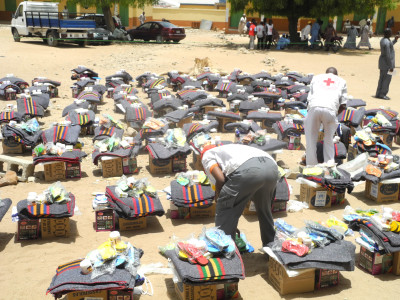THE population of Internally Displaced Persons (IDPs) in the Northeast has risen to 2.2 million, the United Nations High Commission for Refugees (UNHCR) said yesterday.
UNHCRs Representative to Nigeria Ms Angele Dikongue- Atangana gave the statistics in Abuja at the commission’s yearly stakeholders’ briefing.
Ms. Dikongue- Atangana, however, said that the population rise at the IDP camps was not due to new displacement, saying the agency would not relent in its humanitarian support to the country.
She urged UNHCR partners and donor agencies to assist refugees and displaced persons.
Her words: “The number of IDPs is not really increasing as a result of new displacement.
“The number is increasing specifically because regaining control of the territory by the military opened further access for the humanitarian officials so they can count many more IDPs, be they old IDPs or very recent ones.”
The country representative disclosed that UNHCR had recorded success in its 2015 operational activities in the country, including addressing refugee and IDP plights, advocacy on statelessness and collaboration with the Economic Community of West African States (ECOWAS).
According to her, the commission in its action plan supervised the voluntary repatriation of 452 Cameroonian refugees back to their country.
She said that plans were already in progress to repatriate 165 others back to their country before the end of the year, while resettling others to a third country in Europe and the United States (U.S.).
She said UNHCR was working closely with relevant bodies to ensure that IDPs had their basic rights, especially the right to existence, food, shelter, education, security, amongst other amenities.
The UNHCR representative said that in line with the global campaign in eradicating the scourge, it had engaged the National Assembly in domesticating the frameworks that would prevent and reduce statelessness.
Also speaking, Ms Liz Ahua, UNHCR regional representative to West Africa, urged donors and partners to take a trip to the field for a better understanding of the situation.
According to her, the rate of displacement was alarming and actions needed to be taken fast as the displaced population could amount to the population of other smaller African countries.
END


Be the first to comment